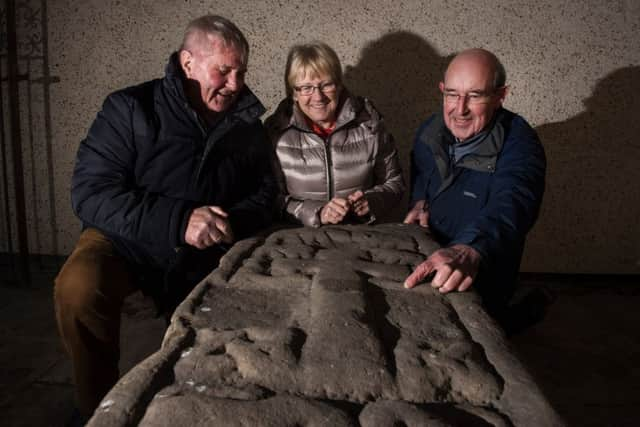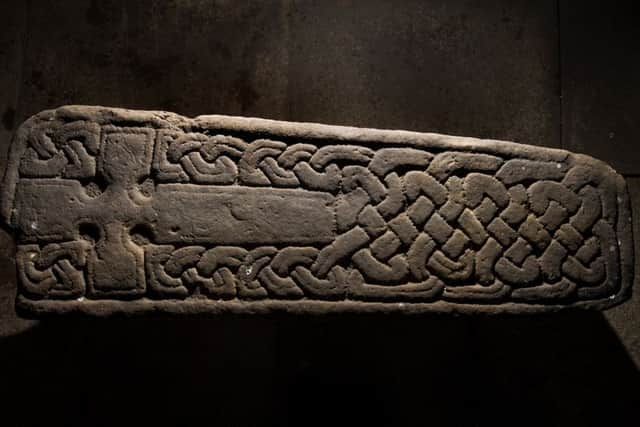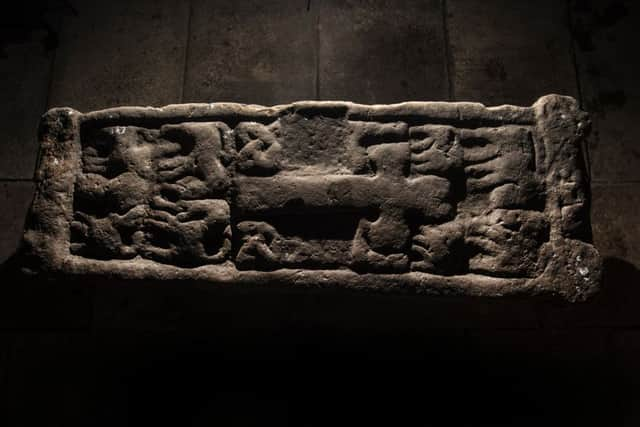Ancient stone slabs could be linked to lost Kingdom of Strathclyde


For generations, people in the Renfrewshire community of Inchinnan have assumed that the burial stones in the grounds of their parish church were a legacy from medieval times.
But a new analysis of the ancient artefacts using the latest imaging techniques has found that they are several centuries older than first thought.
Advertisement
Hide AdIt is believed they were used to mark the final resting place of prominent figures from the long-lost kingdom of Strathclyde, a historically significant yet poorly documented stronghold which reached its zenith as the Vikings were waging bloody raids on Scotland.


Until now, historians believed the three burial stones – long slabs featuring various carvings – dated back to around the 12th century.
They originally came from the long-demolished All Hallows Church, itself a replacement of the earlier Inchinnan Old Parish Church, which was active in medieval times and dedicated to St Conval, who is thought to have established a monastery near the site around AD 600.
In an attempt to better understand the history of the stones, a community archeology project enlisted the help of specialist researchers to carry out new analysis using cutting-edge technology.
While the stones are known to have decorations and inscriptions, the passage of time rendered them largely invisible to the naked eye.


Clara Molina Sanchez, a conservation expert at the Edinburgh-based firm Spectrum Heritage, used a multi-imaging technique known as reflectance transformation imaging (RTI), which provides detailed information about a material’s surface.
Advertisement
Hide AdIt allowed experts to create a virtual model of the stones and, using photogrammetry – the science of taking measurements from photographs – they were able to identify details such as swords and other inscriptions.
With the help of Megan Kasten, a PhD student at the University of Glasgow – who has studied the history of the Govan Stones, which date back to the ninth century and were sent on loan to the British Museum in 2014 – the significance of the Inchinnan artefacts became clear.
Advertisement
Hide AdStudying the three dimensional models, Ms Kasten noticed one of the stones had a cross design on the top third, as well as faint panels of interlacing, just like the stones in Govan.


She said: “This new addition is really exciting. We have few historical records for this time period, so each new discovery increases our understanding of the connections between important early medieval sites in the local area, like Inchinnan and Govan.”
Bill McCallum, spokesman for the Inchinnan Historical Interest Group, which kickstarted the project, said: “The stones have lain outside church for the last 50 years, and when we started this project we did not expect to make this discovery. They are of the same calibre as the Govan Stones and it’s a real surprise for us.”
Dr Sally Foster, lecturer in heritage and conservation at the University of Stirling and chair of the National Committee on Carved Stones in Scotland said the results of the analysis revealed the stones to be historically important.
She said: “The discovery of a previously unrecognised example of the Govan School of early medieval sculpture is a wonderful example of the untapped potential of Scotland’s carved stone resource.


“It shows the power of interdisciplinary research, including the latest scientific techniques, to shed light on the long, complex and unexpected biographies of carved stones.”
Advertisement
Hide AdThe discovery comes at the end of a season of archaeological work at the site of the All Hallows church, a project developed and led by the Inchinnan Historical Interest Group and Dr Heather James from Calluna Archaeology.
The initiative spanned geophysics, excavation, historical research, model making, film making, and graveyard recording.